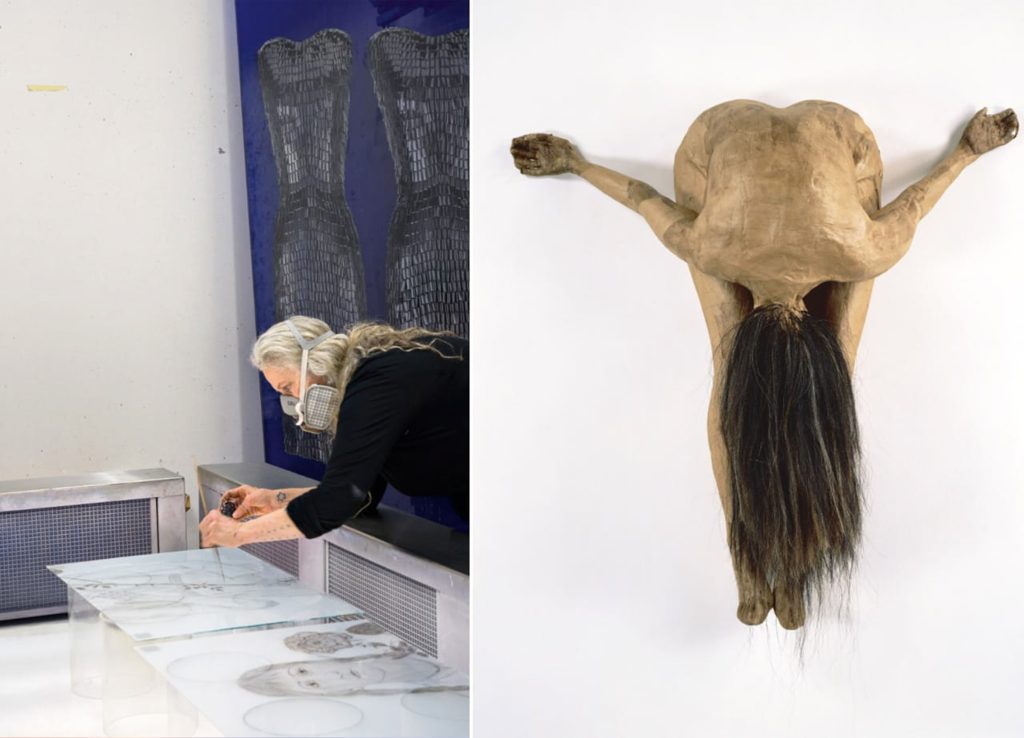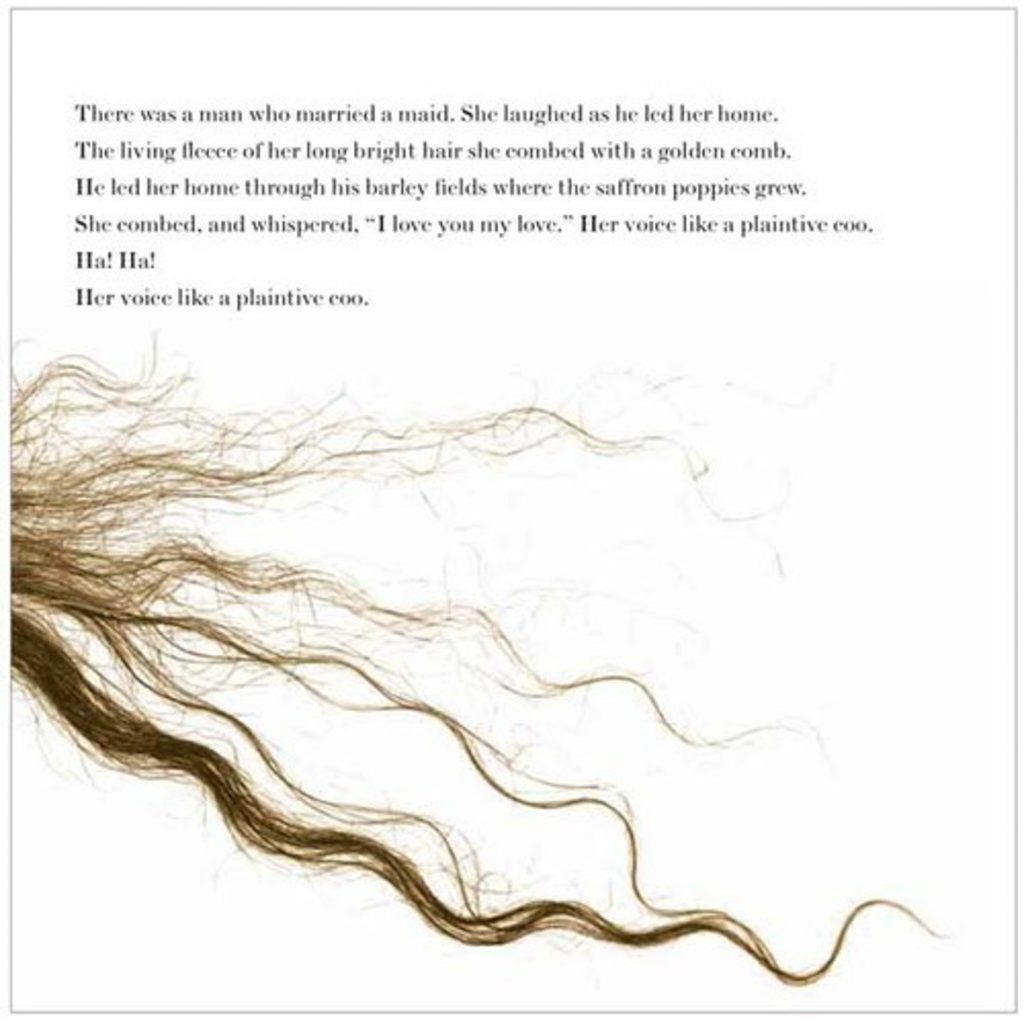
26 Apr Kiki Smith
Kiki Smith, a celebrated contemporary artist, is renowned for her evocative works that often explore the human condition through bodily forms and symbolism. This paper will delve into the recurrent use of hair in Smith’s works, analysing its representation, symbolism, and the artist’s unique approach to expressing feminine identity.
Kiki Smith (b.1954) has long been a significant figure in contemporary art, with her diverse body of work spanning sculpture, printmaking, installations, and drawing. Smith’s work is largely centred around the body, not merely as a physical entity, but as a vessel of identity, experience, vulnerability, and strength.
In many cultures, hair is seen as a symbol of femininity. Long, flowing hair is often associated with traditional depictions of femininity and beauty. In Smith’s works, hair is not just an aesthetic element, but a tool for critiquing societal expectations of women. The way she manipulates hair in her artworks challenges conventional notions of beauty and femininity. It’s not always presented as sleek and beautiful; instead, it can be tangled, unruly, and wild. This can be seen as a subversion of the idealised image of feminine beauty.
Simultaneously, Smith’s use of hair also serves to highlight human vulnerability. Hair is a part of the body that is constantly growing and shedding, symbolising the fragility and transience of human life. It can also signify aging and the inevitability of death, themes that Smith does not shy away from in her art.
Transformation is another theme that is intricately linked with hair. Just as a person can change their hairstyle to signal a change in their identity or a new phase in their life, Smith uses hair to signify transformations, both physical and emotional.
Lastly, Smith’s use of hair also celebrates the strength and resilience of the human spirit, particularly the female spirit. While her works often depict the human body in states of vulnerability, they also underscore the capacity for resilience. Hair, with its ability to grow back even after being cut or damaged, can be seen as a symbol of this resilience.
Through the study of Smith’s works, we gain insight into the potent symbolism hair carries and its potential to communicate nuanced narratives about human existence. Let’s delve further into some specific works where she uses hair to convey these themes. For this, I’ll use the browsing tool to find more detailed information.
Kiki Smith, a renowned feminist artist, has used hair as a symbolic element in her art to explore profound concepts such as feminine identity, human vulnerability, and transformation. In one of her first radical lithographs, she used imprints and photocopies of her own hair, face, and neck, along with a “Cher” wig, to create a wild, dynamic linear web. This innovative approach was a testament to her unique inventiveness and sculptural approach to art. It also marked the commencement of a journey where she used her own body as part of the printmaking process, thus adding a deeply personal touch to her works.
Smith’s art has always focused on the human figure, often featuring visceral representations of men and women, and individual body parts. She has depicted the internally toxic effects of illness, long-held guilt, shame, or humiliation on the human body, bringing awareness to societal issues like the AIDS crisis while dealing with personal losses. Her art serves as a critique of societal norms surrounding femininity, offering a nuanced portrayal of the strength and resilience of the female spirit.
In some of her works, Smith also explores the idea of the wild woman, or ‘she-wolf’, symbolised through her detailed and naturalistic depictions of wolves. These she-wolves, who act instinctively according to their intuition, represent the idea of self-knowledge and self-acceptance gained from deep personal introspection. This feminist dialogue on self-acceptance and embracing one’s inner instincts is a key element in understanding the symbolism and narratives in Smith’s artworks.
She also illustrates women as feral beings, living on the margins of society and responding to their most basic animal nature. Smith’s depictions of such figures highlight the societal fear and suspicion often associated with women who operate outside societal norms, echoing cultural and narrative traditions such as the story of Lilith, the first wife of Adam in Jewish tradition, who chose to live in the demon realm rather than submit to male dominance.





No Comments